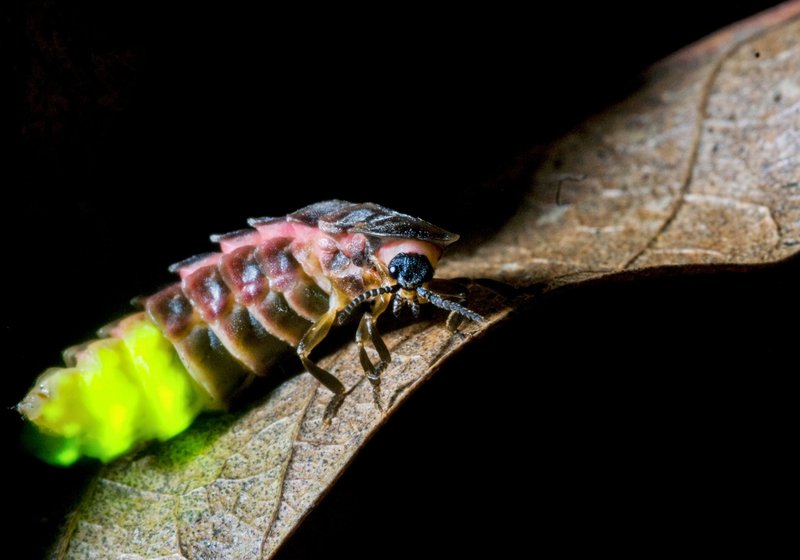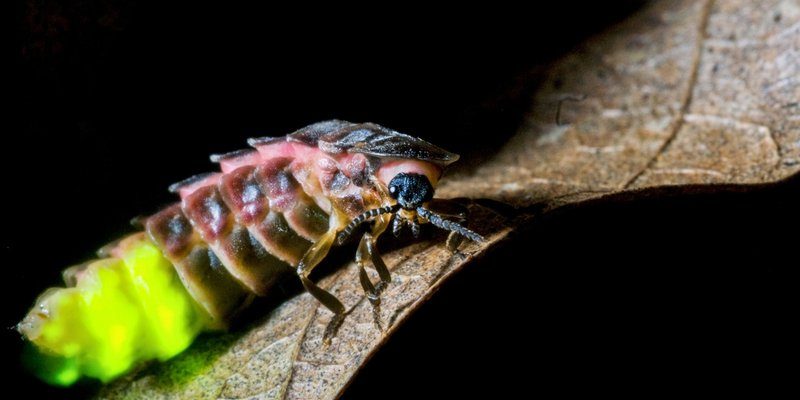
In the world of glow worms, these little bioluminescent wonders aren’t just lighting up for our viewing pleasure. They use light not just for beauty but also as a language of sorts. Imagine trying to have a conversation in the dark without words—that’s essentially what they do! Let’s break it down and see how glow worms communicate, why their light displays are significant, and the fascinating lives they lead in nature.
What Are Glow Worms?
To understand how glow worms communicate, we first need to know what they really are. You might be surprised to learn that the term “glow worm” refers to various species. Most commonly, it describes the larvae of certain beetles, including the *Lampyridae* family—think fireflies, but below ground.
Glow worms can be found in many places around the world, thriving in damp and dark environments like caves or forests. They create silken threads to catch prey, which often consist of small insects caught in their glowing traps. Honestly, it’s like nature’s own version of a spider web, but with a glowing twist. As the larvae mature, they display an impressive glow that can be seen from a distance.
You might be wondering how these little guys produce their mesmerizing light. It all comes down to a chemical reaction involving a pigment called luciferin and an enzyme called luciferase. When they mix, voila, light! This bioluminescence not only helps them catch food but plays a crucial role in communication as well.
How Do Glow Worms Communicate?
Here’s the thing: glow worms don’t have vocal cords or the ability to make sounds like we do. Instead, they rely on their light patterns to convey messages to one another. It’s quite fascinating! When the glowing larvae emit light, they create a rhythm that can signal many things, such as attracting mates or warning off predators.
Think of it like sending text messages, but instead of words, they’re sending bursts of light. Male glow worms, for instance, use light signals to attract females. If a female catches the right rhythm, she might respond with her own light pulses, creating a syncopated dance of lights between the two. This “light conversation” is essential in finding a mate in the vast, dark environment they inhabit.
Interestingly, these light signals can also indicate the health and vitality of the glow worms. Brighter lights may show that an individual is healthier and more attractive to potential mates. In this way, the glow worm’s lights convey not just information but also assess their desirability in the evolutionary game of love.
The Science of Light Patterns
So, how exactly do glow worms create those captivating light patterns? The magic happens in the specific intervals and intensities of their light emissions. Researchers have found that different species have different “languages” of light. Some might blink quickly, while others may produce slower, more rhythmic patterns.
This light communication is not just about individual conversations; it can also synchronize groups of glow worms. For example, in certain environments, you might see clusters of glow worms flashing in unison. This impressive coordination could serve multiple purposes, such as creating a more prominent light display for attracting mates or confusing predators.
But it’s not all about romance. Light patterns can also play a role in survival strategies. For instance, glow patterns may help lure in prey, making it easier for the glow worms to catch an unsuspecting meal in their silk threads. It really is a multifaceted communication system that serves several functions.
The Importance of Communication
Understanding how glow worms communicate sheds light on the importance of bioluminescence in nature. Their light patterns are not only beautiful but also necessary for their survival. Imagine if humans had to rely solely on visual cues instead of verbal communication—things would get pretty complicated! For glow worms, every flash and flicker counts.
The light shows also contribute to the ecosystem by attracting insects, which can help control populations of certain pests. By using their light to create traps, glow worms play a role in the food chain. They’re not just pretty lights in the dark; they’re a vital part of their ecosystem.
Moreover, studying these light patterns can lead to broader scientific insights as well. By understanding how different species communicate, researchers can learn about evolutionary adaptations and environmental interactions. It’s a perfect example of how interconnected life is—from the tiniest glow worm to the largest ecosystems.
Threats to Glow Worm Populations
Unfortunately, glow worms face several threats that could impact their populations and, consequently, their unique communication methods. Habitat loss is a significant concern, especially as urbanization expands and natural areas are destroyed. These changes can limit where glow worms can live and thrive.
Additionally, light pollution from cities can disrupt their natural light patterns. Imagine trying to send a text message in a brightly lit room—it wouldn’t work too well! This interference can affect their mating and survival abilities, leading to a decline in their numbers.
Conservation efforts are essential to protect glow worm habitats and minimize light pollution. Since they play a crucial role in ecosystems, ensuring their survival is vital not just for them but for the environment as a whole.
How We Can Help Glow Worms
You might be thinking, “What can I do to help these glowing wonders?” There are several steps you can take! First, if you live in or near an area where glow worms are present, consider supporting local conservation efforts. This can include participating in clean-up days or supporting habitat restoration projects.
Another simple way to help is to reduce light pollution. You can do this by turning off outdoor lights that aren’t necessary or using shielded outdoor lighting that minimizes light spill. Even small changes can make a big difference.
Lastly, spreading awareness about glow worms and their importance is key. By educating others about these fascinating creatures, you can contribute to their conservation. Remember, every little bit helps in protecting this magical part of our natural world.
Glow worms are truly enchanting creatures that use light as their primary means of communication. From attracting mates to catching dinner, their shimmering displays serve many vital functions. By illuminating their surroundings, they not only contribute to the beauty of nature but also play an essential role in their ecosystems.
As we learn more about how glow worms communicate with light patterns, it reminds us how interconnected all life is. Protecting them means protecting a bit of our natural heritage. So next time you see those little lights shining in the dark, take a moment to appreciate the magical dialogue happening right before your eyes. After all, in the world of glow worms, every flicker tells a story.

